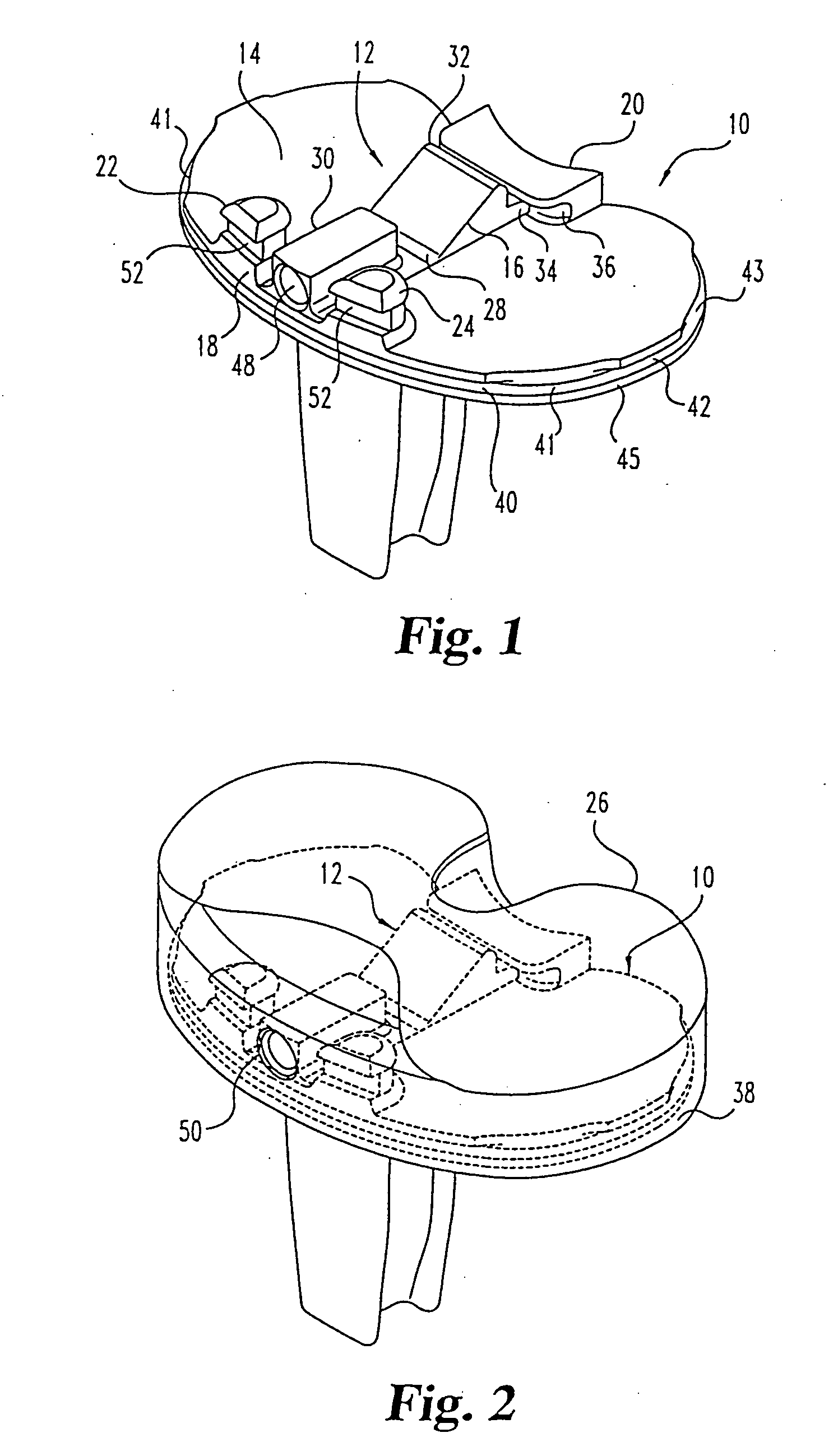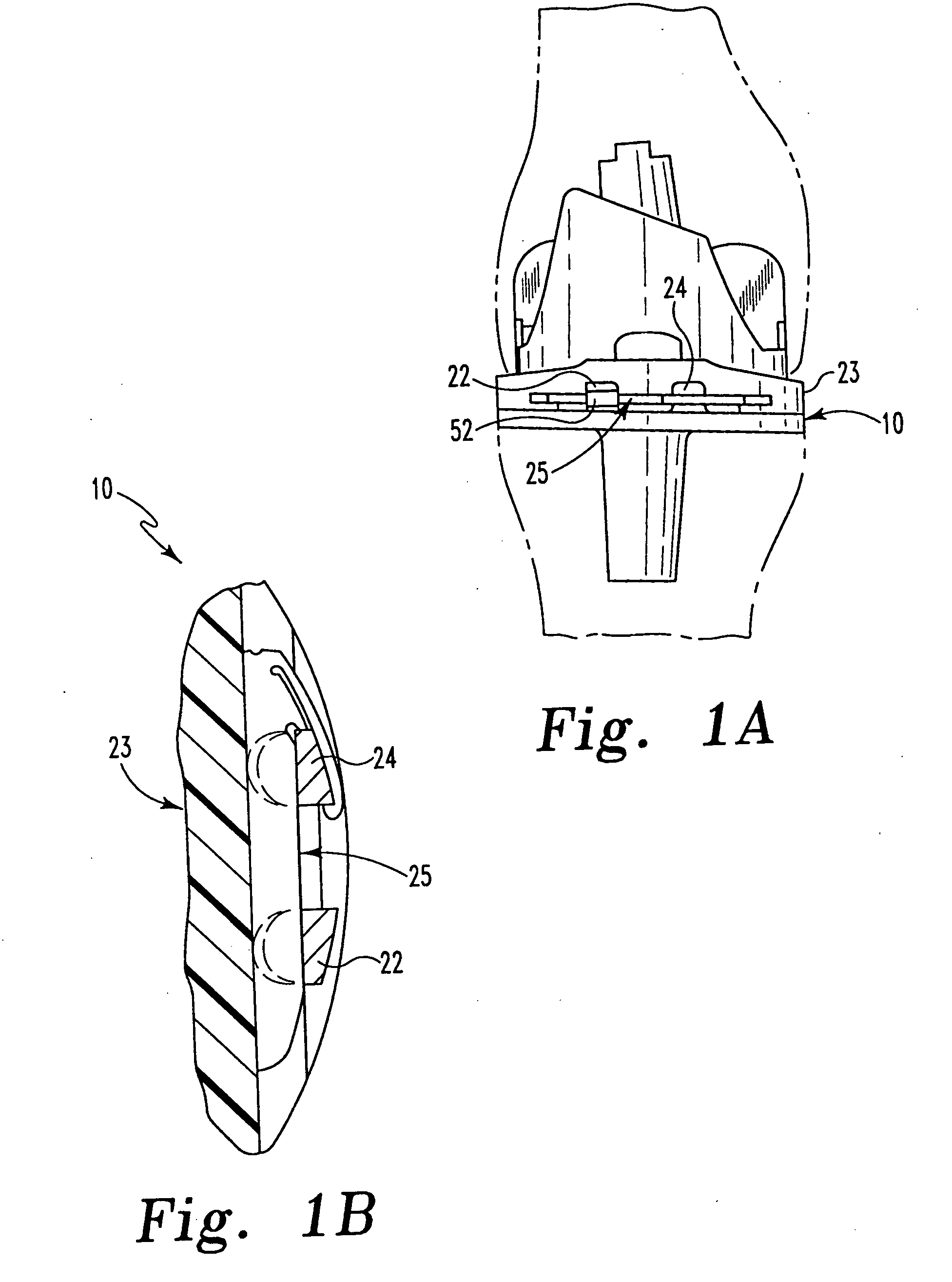Tibial prosthesis convertible in vivo to a modular prosthesis
a modular, tibial technology, applied in the field of surgical implantable joint prosthesis, can solve the problems of possible bone loss or fracture, difficult revision surgery, and difficult to avoid micromotion with modular components
- Summary
- Abstract
- Description
- Claims
- Application Information
AI Technical Summary
Benefits of technology
Problems solved by technology
Method used
Image
Examples
Embodiment Construction
[0030] For the purpose of promoting an understanding of the principles of the invention, reference will now be made to the embodiment illustrated in the drawings and specific language will be used to describe the same. It will nevertheless be understood that no limitation of the scope of the invention is thereby intended, such alterations and further modifications in the illustrated device, and such further applications of the principles of the invention as illustrated therein being contemplated as would normally occur to one skilled in the art to which the invention relates.
[0031] With reference to FIG. 1, the preferred embodiment of the present invention includes a tibial base or tray 10 and a release member 12 slidably mounted on the intercondylar portion thereof on a smooth, flat superior surface 14. Release member 12 includes a wedge portion 16 and extends between the anterior edge 18 of base 10 and a retaining rail 20 extending superiorly from the posterior edge of the base. ...
PUM
 Login to View More
Login to View More Abstract
Description
Claims
Application Information
 Login to View More
Login to View More - R&D
- Intellectual Property
- Life Sciences
- Materials
- Tech Scout
- Unparalleled Data Quality
- Higher Quality Content
- 60% Fewer Hallucinations
Browse by: Latest US Patents, China's latest patents, Technical Efficacy Thesaurus, Application Domain, Technology Topic, Popular Technical Reports.
© 2025 PatSnap. All rights reserved.Legal|Privacy policy|Modern Slavery Act Transparency Statement|Sitemap|About US| Contact US: help@patsnap.com



